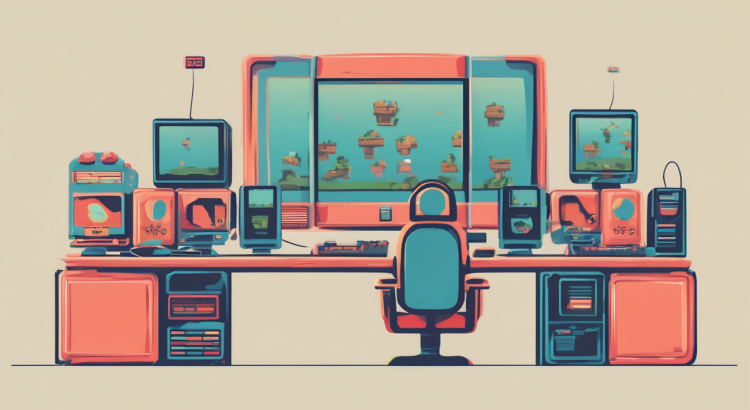Cherry Games traces flash game legends history, menacing boss fights, and quirky puzzles that defined a generation of quick, browser-based entertainment.
The Rise of Flash Game Legends
During the late 2000s, flash game legends history unfolded on school computers, cybercafes, and home desktops. Players only needed a browser and a basic internet connection.
Small teams and solo creators experimented freely. They mixed arcade mechanics, platforming challenges, and weird humor without publisher pressure.
As a result, portals filled with thousands of short, addictive experiences. Many of these titles became viral sensations overnight.
Iconic Flash Game Genres and Titles
Different genres shaped flash game legends history and helped players discover their favorite style. Some games focused on skill, others on narrative or pure chaos.
Platformers like “Fancy Pants Adventure” delivered fluid movement and expressive animation. It felt surprisingly polished for something that loaded inside a browser window.
Meanwhile, defense games such as “Bloons Tower Defense” proved that simple mechanics and clear feedback could hook players for hours.
Physics-based sandboxes, including “Crush the Castle” and later “Angry Birds”-style clones, made destruction satisfying and replayable.
Why Flash Games Became Cultural Icons
Several factors explain how flash game legends history turned into a lasting cultural phenomenon. Accessibility was the most important one.
Anyone could play from school libraries, office computers, or shared family desktops. There was no download, installation, or payment barrier.
In addition, sharing links through instant messaging and early social media spread these games rapidly. A single viral recommendation could boost daily plays into the millions.
On the other hand, creators enjoyed low technical barriers. Flash tools allowed artists, hobbyists, and students to publish their ideas quickly.
From School Breaks to Viral Fame
Flash game legends history is closely tied to bored breaks between tasks. Many players remember sneaking quick sessions during classes or work.
Short level design and instant restarts encouraged repeat attempts. Failing rarely felt punishing; it was part of the fun.
Read More: The rise and fall of Flash games and how to play them today
Shared high scores, speedrun challenges, and friendly dares turned simple games into social rituals. Every class had someone claiming a new record on a popular title.
Because of this, certain games became common memories for people who never met yet grew up in the same online era.
Creative Freedom and Experimental Design
Another key element in flash game legends history was unrestrained experimentation. Developers did not fear niche ideas or dark themes.
Story-driven experiences like “The Company of Myself” and “Loved” explored loneliness, control, and unreliable narration. They showed that browser games could be emotional.
Meanwhile, absurd comedies such as “QWOP” or “The Impossible Quiz” leaned into frustration and chaos. They inspired rage, laughter, and endless reaction videos later on.
Therefore, Flash proved that games did not need big budgets to be memorable. A clever mechanic or sharp writing could stand out instantly.
Communities, Portals, and Newgrounds Legacy
Major platforms shaped flash game legends history by curating, rating, and discussing new releases. Newgrounds, Kongregate, Armor Games, and Miniclip became daily destinations.
These sites offered comment sections, rating systems, and developer profiles. Players engaged directly with creators, suggesting features or reporting bugs.
In addition, badges, achievements, and leaderboards on some portals created meta-goals beyond a single playthrough. This structure kept visitors returning every day.
Newgrounds, in particular, blended animation, music, and games into a single creative hub. Many now-famous indie developers started there.
The End of Flash and the Preservation Effort
The decline of the plugin transformed flash game legends history into an urgent preservation challenge. Security concerns and shifting web standards pushed Flash aside.
Browsers slowly disabled support, and thousands of games risked disappearing overnight. Decades of creative work suddenly looked fragile.
However, preservation projects emerged to save these cultural artifacts. Initiatives like Flashpoint and Ruffle aim to archive and emulate classic titles.
As a result, younger players can still experience beloved games, while older fans revisit formative digital memories.
Efforts to document flash game legends history show how seriously enthusiasts view this chapter of gaming. It is no longer treated as a disposable fad.
Flash Game Influence on Modern Gaming
Many mechanics from flash game legends history survive in mobile and indie games today. Quick sessions, clear feedback loops, and simple controls remain effective.
Popular mobile hits borrow ideas from tower defense, endless runners, and physics puzzles first refined in Flash form.
Meanwhile, digital storefronts allow small teams to sell polished versions of concepts that once lived as free browser experiments.
Therefore, the spirit of Flash lives on in how creators test ideas quickly and connect directly with communities.
Honoring Flash Game Legends Today
Fans continue to celebrate flash game legends history through streams, retrospectives, and curated collections. Nostalgia mixes with genuine respect for clever design.
Developers who grew up playing these browser titles now craft their own projects, often citing Flash inspirations openly.
Revisiting these classics highlights how much creativity flourished with limited tools and small file sizes. Constraints often pushed innovation forward.
To preserve that legacy, enthusiasts share archives, write long-form histories, and keep links alive, including flash game legends history as a reference point for future generations.
Ultimately, flash game legends history reminds players that passion, experimentation, and accessible distribution can reshape an entire medium, leaving lasting memories on every browser they touched.



